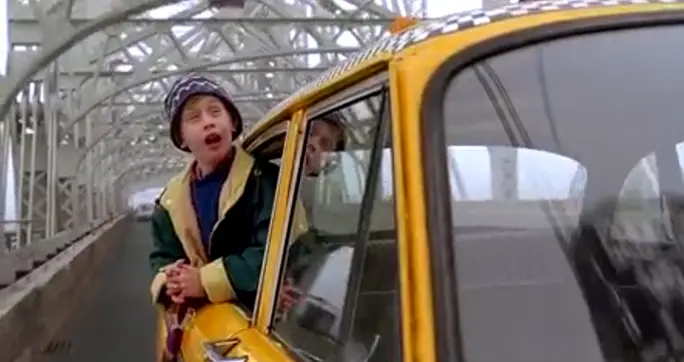- Town Police Clauses Act of 1847 – Urinating on a London Taxi Wheel: This curious interpretation of the Town Police Clauses Act of 1847 remains a subject of debate. While some believe this Act permits urination on a London taxi’s left rear wheel if the driver’s right hand touches the cab, the Law Commission disputes this claim. Despite its dismissal as an urban myth, the debate surrounding this unusual interpretation continues to perplex many.
- Sabine Schmitz – The Fastest Taxi Driver: Sabine Schmitz, renowned as a professional motor racing driver for BMW, achieved fame as the world’s fastest taxi driver. Her astonishing ability to cover 20.8 kilometers in just 9 minutes showcases her exceptional driving skills, earning her a unique title in the realm of taxi drivers.
- The World’s Longest Taxi Ride: Three university friends embarked on an epic journey, covering over 43,000 kilometers in a taxi, accruing an astounding fare of nearly 80,000 pounds on the taximeter. Remarkably, as they were the ones driving the car themselves, they never had to pay the exorbitant fare, making their global journey an adventure of a lifetime.
- Record Altitude in a Taxi: This adventurous trio didn’t stop at the longest taxi ride; they also clinched the world record for reaching the highest altitude in a taxi, ascending over 5,000 meters. Their taxi escapades took them to breathtaking heights, literally!
- London Black Cabs and Tall Roofs: The distinctive tall roofs of London’s black cabs have an interesting historical origin. This design was a response to an old English law mandating that taxicabs must provide enough headroom for a passenger to sit comfortably while wearing a bowler hat, ensuring a dignified and uncramped ride for Londoners in their formal headwear.
- Evolution of Women Taxi Drivers in New York: The evolution of women taxi drivers in New York City marks an intriguing shift. From the first female cab driver in 1925 to a significant rise in their numbers by the late 1960s, the proportion of female drivers has diminished over time, with less than one in a hundred New York cab drivers being women today, reflecting changing demographics and employment patterns.
- Automated Doors in Japanese Taxis: In Japan, passenger convenience is paramount. Taxis are equipped with a unique feature where the left, rear door opens automatically for passengers. A button located upfront enables the driver to control the door, enhancing ease of access for passengers.
- London Black Cab’s Remarkable Turning Ability: London’s iconic black cabs boast an impressive turning circle of only 25 feet, allowing them to maneuver through narrow and congested streets with remarkable agility, earning them the nickname of being able to “turn on a two pence.”
- Tragic Yet Notable Composer of “Taxi Driver”: The composer of the movie “Taxi Driver” tragically passed away shortly after completing the film’s soundtrack. Despite his untimely death, his musical contribution earned him a posthumous nomination for an Oscar, a testament to his talent and the lasting impact of his work.
- Music Fees for Finnish Taxi Drivers: In Finland, taxi drivers are obliged by law to pay a yearly fee of about $40 if they choose to play music in their cars while transporting customers. This regulation showcases the country’s adherence to copyright and licensing laws, ensuring fair compensation for musical artists.
- Hailing a Cab in New York City: New York City’s iconic yellow cabs have a unique hailing system. If the center light on top of the cab is lit, it means the cab is available. However, if the side lights are illuminated, it indicates that the taxi is occupied or on duty.
- Taxi Color Codes Around the World: Different cities have different color codes for their taxis. In Bangkok, Thailand, for instance, taxis are known for their vibrant and varied colors. In Paris, France, taxis are typically light grey, while in Mumbai, India, they sport a distinctive black and yellow color scheme.
- Taxi Rooftop Advertisements in Moscow: In Moscow, some taxis have electronic rooftop displays that show advertisements. This not only serves as a source of additional income for the taxi driver but also turns the cab into a moving billboard, catching the attention of pedestrians and other drivers.
- Taxi Traditions in Mexico City: In Mexico City, it is customary for taxi drivers to decorate their vehicles with religious symbols and artifacts. This practice is seen as a way for drivers to seek protection and blessings for a safe journey on the bustling and often congested streets of the city.
- The Oldest Taxi Service: The first taxi service in the world was established in Paris in 1640. It consisted of horse-drawn carriages available for hire. This early version of a taxi service laid the groundwork for the modern taxi industry that we are familiar with today.
- The Green Cab of Bexley: In Bexley, a suburb of London, there’s a unique taxi service known as the “Green Cab.” The twist is that this cab is not green in color but is environmentally friendly, with a focus on low emissions and sustainable practices, setting an example for eco-conscious transportation.
- Taxi Apps and the Digital Era: The advent of ride-sharing apps has revolutionized the taxi industry. Companies like Uber and Lyft have transformed the way people hail and pay for rides. This shift towards digital platforms has both streamlined the process for passengers and presented new challenges and opportunities for traditional taxi services.
- The Original “Checker Taxi”: The iconic yellow and black Checker Marathon taxis were a common sight on the streets of many American cities. These classic cabs became synonymous with the taxi industry. Although production of the Checker Marathon ceased in the late 1980s, its distinctive design remains etched in the collective memory of taxi enthusiasts.
- Taxi Murals in Philadelphia: In Philadelphia, some taxi drivers have turned their vehicles into rolling works of art by adorning them with vibrant murals. These unique designs showcase the creativity and individuality of the drivers while adding a touch of color to the city’s streets.
- Taxi Trivia in Singapore: Singapore boasts one of the most advanced taxi fleets globally, with features such as GPS navigation, air-conditioning, and electronic payment systems. The taxis are even equipped with sensors that automatically raise an alarm if the driver dozes off, ensuring passenger safety.
As we explore these fascinating and sometimes quirky aspects of the taxi industry, it becomes clear that taxis are not just a means of transportation; they are woven into the cultural fabric of cities around the world, each with its own unique stories and traditions. Whether it’s the historical quirks of London’s black cabs or the modern innovations in New York City, taxis continue to be an integral part of urban life, connecting people and places in ways that extend beyond the simple act of getting from point A to point B.

